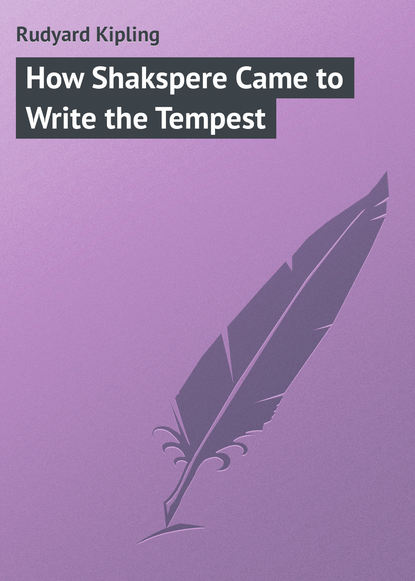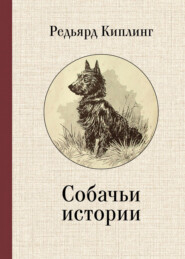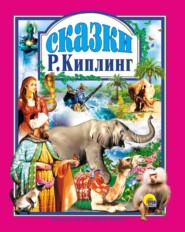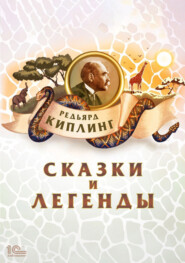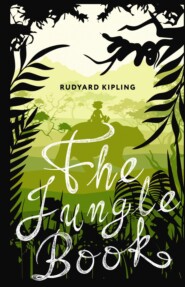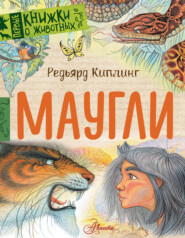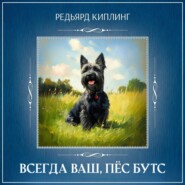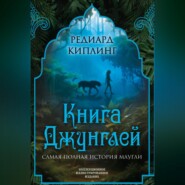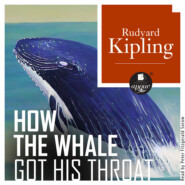По всем вопросам обращайтесь на: info@litportal.ru
(©) 2003-2024.
✖
How Shakspere Came to Write the Tempest
Настройки чтения
Размер шрифта
Высота строк
Поля
Rudyard Kipling
Rudyard Kipling, Ashley H. Thorndike
How Shakspere Came to Write the Tempest
INTRODUCTION
Mr. Kipling’s brilliant reconstruction of the genesis of the ‘Tempest’ may remind us how often that play has excited the creative fancy of its readers. It has given rise to many imitations, adaptations, and sequels. Fletcher copied its storm, its desert island, and its woman who had never seen a man. Suckling borrowed its spirits. Davenant and Dryden added a man who had never seen a woman, a husband for Sycorax, and a sister for Caliban. Mr. Percy Mackaye has used its scene, mythology, and persons for his tercentenary Shaksperian Masque. Its suggestiveness has extended beyond the drama, and aroused moral allegories and disquisitions. Caliban has been elaborated as the Missing Link, and in the philosophical drama of Renan as the spirit of Democracy, and in Browning’s poem as a satire on the anthropomorphic conception of Deity.
But apart from such commentaries by poets and philosophers, the poem has lived these many generations in the imaginations of thousands. There, the enchanted island has multiplied and continued its existence. Shelley sang,
Of a land far from ours
Where music and moonlight and feeling are one.
Shakspere created that land as the possession of each of us. Not far removed, but close to the great continent of our daily routine and drudgery, lies this enchanted island where we may find music and moonlight and feeling, and also fun and mischief and wisdom. There, in tune with the melody and transfigured as by the charm of moonlight, we may encounter the nonsense of drunken clowns, the mingled greed and romance of primitive man, the elfishness of a child, the beauty of girlhood, and the benign philosophy of old age. We may leave the city at the close of business, and, if we avoid the snares of Caliban and Trinculo, we may sup with Prospero, Ariel, and Miranda.
How did Shakspere discover this enchanted island? From what materials did he create the “baseless fabric of this vision”? What had London playhouses to do with these spirits of thin air? On what books or plays were these dreams made? Out of the issues of rivalry and profit which beset the King’s company of players at the Globe and the Blackfriars, how came this “insubstantial pageant”? We have been told that the Sonnets are the key with which to unlock Shakspere’s heart; and perhaps if we could answer all these questions we might have the key to his imagination. I do not believe, however, that his imagination was lockt up. Rather it was open wide to many impulses, hospitable to countless influences. This apparently is the opinion of Mr. Kipling, who suggests that Shakspere’s “vision was woven from the most prosaic material, from nothing more promising, in fact, than the chatter of a half-tipsy sailor at the theater.”
Mr. Kipling writes as one inventor of tales about another. Certainly no one is better qualified to trace out the processes of the creative imagination and to discover the very fabrics of its visions. In those marvelous stories of his, who has not recognized a Shaksperian catholicity in the quest of fact and a Shaksperian alchemy in its transformation? He has himself created many enchanted islands and he knows whereof they are made. The sailor just home from a famous shipwreck on the Bermudas might have stept out of one of Mr. Kipling’s tales; but he becomes a factor in some very acute criticism, for the sailor’s “profligate abundance of detail at the beginning, when he was more or less sober, supplied and surely established the earth-basis of the play in accordance with the great law that a story to be truly miraculous must be ballasted with facts.”
Mr. Kipling’s letter has found a place in all subsequent critical discussions of the play, and has become a contribution to that historical research which seeks to discover the ways and means by which literature is made. It may not be unseemly therefore to bring together as an introduction and commentary some other suggestions that criticism has advanced in regard to the influences and incentives that directed Shakspere’s art in this play, written at the very close of his career and at the moment when the Elizabethan drama had reached its highest development.
Recent investigation has added to our certainty that the play was written in 1610 or 1611, for Mr. Ernest Law has shown that the supposedly forged entry of its performance at court on November 1, 1611 is genuine. Various passages in the play indicate that it was not written before July 1610, when Sir Thomas Gates and his ships sailed up the Thames with news of the safety of the fleet that had departed from Plymouth over a year before. This fleet of nine vessels had started for the new colony in Virginia, had been scattered by a great storm, and the ship ‘Sea Venture’ with the leaders aboard, Sir George Somers, Sir Thomas Gates, and Captain Christopher Newport, had been cast ashore on one of the Bermudas. But there had been no loss of life; the adventurers had lived comfortably for many months, had built two pinnaces from the materials of the wreck, and had rejoined their comrades in Virginia. Before the arrival of Gates from Virginia, reports of the wreck had reached London, so his safe return was a nine days wonder. Full accounts were written. Two were printed in the autumn, and others circulated in manuscript. Shakspere certainly read some of the pamphlets recounting the strange experiences of the expedition, and he made some use of other voyagers’ tales, as Raleigh’s ‘Discovery of Guiana.’ But he may have heard much more than he read in the common gossip of the day. Or, enter Mr. Kipling’s sailor, “the original Stephano fresh from the seas and half-seas over.”
From this original Stephano or from the voyagers’ tales may have come some hints for Caliban. There were many strange accounts of cannibals and monsters. An earlier narrative tells of “a sea monster … arms like a man, without hair and at the elbows great fins like a fish.” Indians had been brought back from America; and only a few years before the play several had been exhibited and aroused much curiosity. As Trinculo observes, “When they will not give a doit to relieve a lame beggar, they will lay out ten to see a dead Indian.” Caliban was doubtless intended to be of the earth, earthy, the opposite of Ariel, the spirit of the air, and was also intended as a sketch of the savage resisting the mastery of the European. But, brutish and savage though he be, he too is a dweller in the enchanted island. For him too life has its romance. There is no finer touch of Shakspere’s magic in the whole play than this. Marco Polo had recounted that “You shall heare in the ayre the sound of tabers and other instruments, to put the travellers in fear, &c., by evill spirits that make these sounds and also do call … travellers by their names.” But Shakspere’s Caliban reassures his companions frightened by Ariel playing on a tabor.
Be not afeard. The isle is full of noises,
Sounds and sweet airs, that give delight and hurt not.
Sometimes a thousand twangling instruments
Will hum about mine ears, and sometimes voices
That, if I then had wak’d after long sleep,
Will make me sleep again; and then, in dreaming,
The clouds methought would open and show riches
Ready to drop upon me, that, when I wak’d,
I cried to dream again.
The enchanted island owes still more to preceding voyagers in the great seas of romance. Shakspere had made many earlier voyages thither, but he was not the first Columbus to search out the undiscovered lands of illusions and enchantments. Fortunately for us he lived in the period of imaginative adventure and steered his crafts on the oceans whence many predecessors had returned treasure-laden. This is no place to relate the various circumstances that placed the men of the sixteenth century in a fortunate position for Romance, or to indicate the long development of romantic-comedy in which Shakspere played so great a part. But surely the interview between the dramatist and the sailor would have had very different results if the Elizabethan theater had not been accustomed to the union of the laughable and the romantic, the comic and the marvellous. Such a union is not a common one. There are no romantic-comedies in the literature of antiquity, and very few in modern literature since Shakspere’s death. He found a stage that was already the home of romance, used to fantasy and medley, and used also to fill out a three hours entertainment with sentiment and fun, music and monsters, idealized heroines and puns.
Romance had found its readiest entrance to the stage thru the shows and spectacles which delighted the courts of the Tudors. Venus and Diana, or Loyalty and Sedition, or Red Cross Knight and Fairy Princess, or whoever else, if sumptuously arrayed and bejeweled and sufficiently attended, might be wheeled in on a huge car representing castle or garden or island, decorated with flowers and spangles, begin with a tableau and end with a dance. Along with all this splendor, it would not be thought inappropriate to have a clown dance a jig or mimic the antics of a drunken man. Such spectacles soon became the joy of the public as well as of the court, and were imitated by many a rustic Holofernes or Bottom. Nymphs and fairies, the Nine Worthies, or the Golden Age might find representation by almost any village pedagog and his school children.





